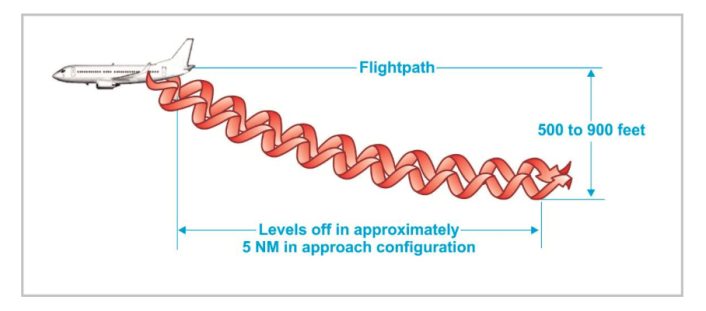The Antonov An-225 Mriya is a giant flying machine.
The only built Antonov An-225 Mriya (NATO reporting name: Cossack) strategic airlift cargo aircraft is continuing to fly COVID-19 missions across the world carrying various kind of material. On May 13, 2020, the world’s heaviest aircraft carried out its sixth flight to Athens, to carry PPE (Personal Protecting Equipment) from Tianjin, China due to COVID-19.
The footage in this post, the fourth in a series filmed by 11Aviation Videos during the Mriya visit, shows the An-225 landing on runway 03R at Athens International Airport. The clip is literally stunning, both for the position from where it was shot and also because it shows the wake vortices generated by the aircraft. Indeed, along with the heat wave from the exhausts of the six engines, you can also observe the light distortion caused by the vortices (that changed the refractive index, resulting in the “blur” that can be seen following the aircraft).
Generally speaking, wake turbulence is a disturbance in the atmosphere that forms behind an aircraft as it passes through the air. It is made of various components, the most important of which are jetwash and wingtip vortices.
Wingtip vortices form because of the difference in pressure between the upper and lower surfaces of a wing. When the air leaves the trailing edge of the wing, the air stream from the upper surface is inclined to that from the lower surface, and helical paths, or vortices, result. The vortex is strongest at the tips and decreasing rapidly to zero nearing midspan: at a short distance from the trailing edge downstream, the vortices roll up and combine into two distinct cylindrical vortices that constitute the “tip vortices.”

The tip vortices trail back from the wing tips and they have a tendency to sink and roll toward each other downstream of the wing. Although they eventually dissipate at a certain distance from the wing, wingtip vortices cause additional downflow behind the wing and form the major component of wake turbulence that can be extremely dangerous. For this reason, there is a number of separation criteria for take-off, landing and en-route phases of flight based upon Wake turbulence categories. ATC (Air Traffic Control) agencies sequence aircraft departing or landing regard to these minima and aircraft making a visual approach are advised of the relevant recommended spacing and are expected to maintain their own separation.
Needless to say, the greater the size of the aircraft, the more intense the wake turbulence it generates. This turbulence can be so severe to make an aircraft flying nearby or in the path of a larger one, crash.
In 2017, we reported about an incident caused by the severe wake turbulence generated by an Airbus A380:
In a bizarre incident that occurred on Jan. 7, 2017 and has been made public last week, a Challenger 604 business jet flying at 35,000 ft over the Arabian Sea 630 nautical miles southeast of Muscat, Oman, was flipped upside down in midair and thrown violently out of control by a passing Airbus A380 super jumbo.
The midair wake-turbulence incident was so violent that both jet engines on the Challenger 604 business jet flamed-out and departed controlled flight, dropping 10,000 feet out of control and recovering at only 25,000 feet above the ocean. Several people onboard the Challenger 604 were injured in the incident, with one hospitalized according to a report on FlightServiceBureau.org.
[…]
Wake turbulence caused one of the most sensational and tragic accidents in military aviation on June 8, 1966 over Barstow, California near Edwards Air Force Base when the NASA F-104N Starfighter flown by test pilot Joe Walker collided with an Air Force XB-70 prototype. Wake vortices spinning off the XB-70’s wingtip caused Walker’s F-104N to roll, colliding with the right wingtip of the huge XB-70 and breaking apart. The incident contributed to the demise of the ambitious XB-70 program.













